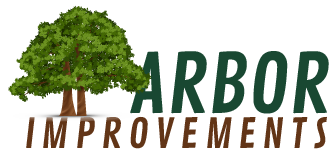Pine trees are known for their timeless beauty and resilience, but even these stalwart giants can face challenges that might make them appear sick or dying. As a concerned tree owner, it’s essential to understand the signs that distinguish a tree in dormancy from one in distress. In this blog post, the experts at Arbor Improvements will explore the subtle yet crucial differences between a dormant and a dying pine tree, helping you make informed decisions for your beloved green companion.
Do Pine Trees & Evergreens have a Dormancy Period?
Pine trees, like many other deciduous and evergreen species, undergo a natural process called dormancy. This occurs during the colder months when the tree conserves energy by slowing down its metabolic processes. The tree may shed some needles, which can be alarming to the untrained eye. However, it’s crucial to recognize that this shedding is a normal part of the tree’s life cycle.
How Do I Know if My Pine Tree is Dormant?
Pine Needle Shedding: As mentioned earlier, shedding needles during the fall and early winter is a natural occurrence. Look for needles at the base of the tree and check if they are mostly brown or yellow, indicating normal shedding.
Reduced Tree Growth: During dormancy, pine trees will experience a slowdown in growth. The branches may appear less vibrant, and there might be fewer new shoots or buds.
Changes in Color: While evergreen trees maintain their green hue throughout the year, some color changes are normal during dormancy. The needles may turn slightly yellow or brown, especially towards the interior of the tree.
How Do You Tell if a Tree is Stressed?
Needles Turning Brown Prematurely: If you notice that the needles on your pine tree are turning brown before the typical dormancy period, it could be a sign of stress. This might be due to factors such as disease, pests, or unfavorable growing conditions.
Bare Branches: While some needle shedding is normal during dormancy, a significant loss of needles, especially on the outer branches, could indicate a problem. Bare branches may suggest disease or other issues affecting the tree’s overall health.
Unusual Growths or Discoloration: Keep an eye out for any abnormal growths, lesions, or discoloration on the bark or needles. These can be signs of diseases or pest infestations that require immediate attention.
Pre-Storm Inspection, Emergency Tree Removal, Stump Grinding, Tree Trimming & Pruning & More in Greenville, Greer, Mauldin, Simpsonville, Union and Spartanburg, SC
In conclusion, understanding the difference between a dormant and a dying pine tree is crucial for effective tree care. While dormancy is a natural and temporary state, signs of distress should not be ignored. Regular observation, proper maintenance, and prompt action can help ensure the health and longevity of your pine tree, allowing it to stand tall and vibrant for years to come. As always, the experienced tree experts at Arbor Improvements can inspect your tree, providing you peace of mind. We are honored to provide top-notch tree care services and arboricultural solutions that meet the highest standards of quality, all while adhering to scheduled timelines and budgets. Our love for trees run deeper than the roots so we are committed to doing whatever it takes to save your trees. Call Arbor Improvements today to inspect and maintain your trees so you can have peace of mind knowing they are in good hands.


